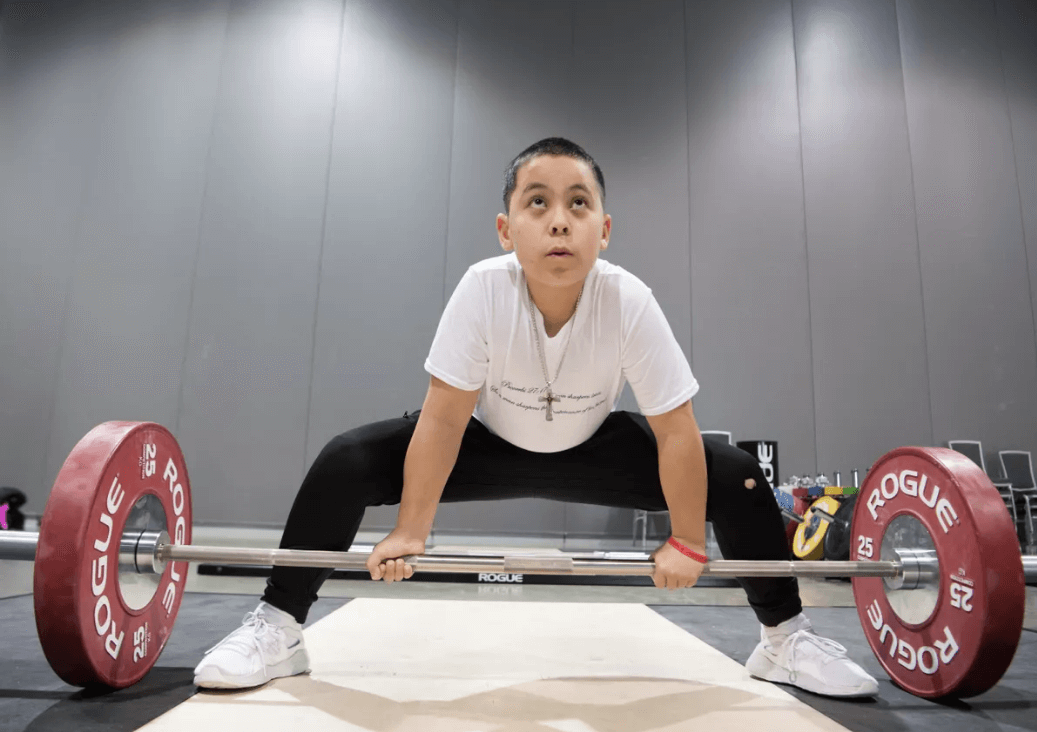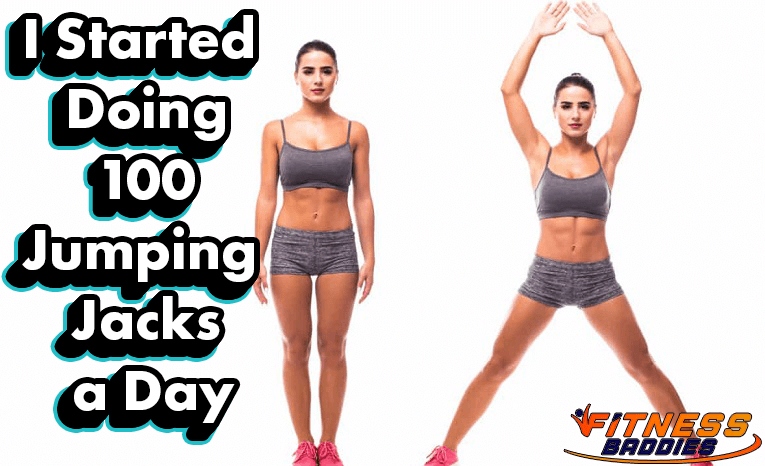Youth Weight Training: Is it Okay? When Should They Start Lifting Weights?

Yes, you read that right, strength training for the youth, aka kids. Workout exercises for teenage girls as well as teenage boys offers numerous benefits to them and is a great idea for any kid who wants to feel better, look better and boost their overall self esteem. It can also set them on a lifetime path of training, which will lead to increased strength, better fitness and health.
The main reason why I chose to delve into this topic is because, as a dad, it affects me personally. I’ve managed to get my 11-year-old son to start strength training sessions for children. And he’s been enjoying both the exercises themselves and their benefits so far!
I obviously had to do my share of research before talking to him, and that’s one of the reasons I know just a tiny bit more than the average person when it comes to this somewhat specific topic.
Lucky for you, dads and moms reading this, I’ve chosen to share both my knowledge and my personal experience with my own son, and I hope it helps you and your children a lot.
Quick Weight Lifting Vocab Lesson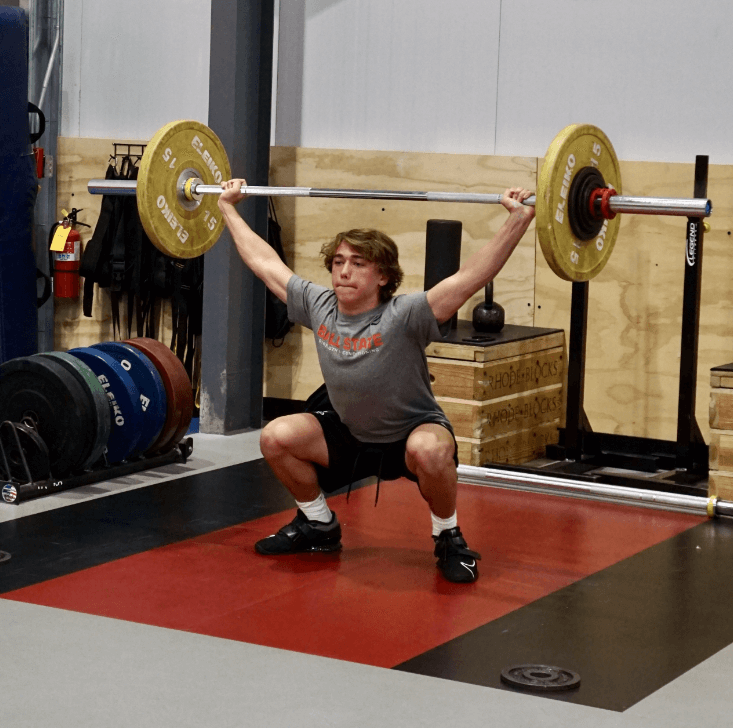
Let’s set the record straight on a few things about weight lifting for youths before diving into the meatier bits.
Weight Training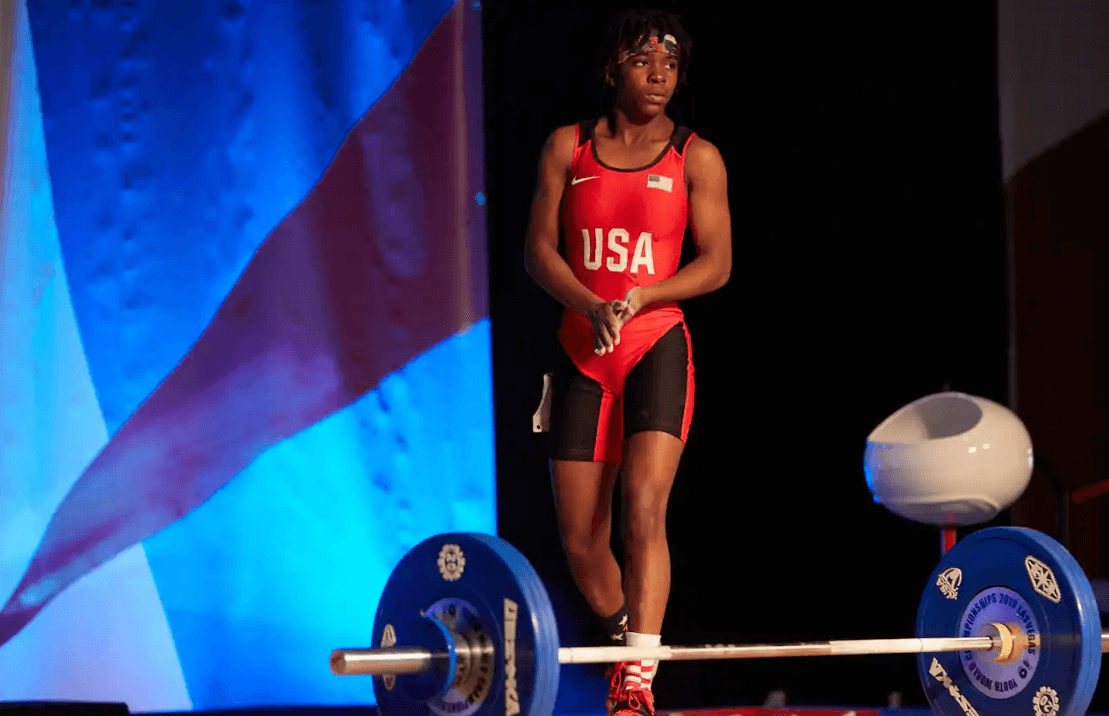
The main goal of weight training is to increase your performance in various sports by building power, strength, agility, and more. The best routines to achieve such results are widely debated by people.
Some prefer exercises that are based on dominant actions involved in sport, whereas others focus on building power and general strength as a base from which one’s performance can be improved.
For example, doing a bunch of one-legged squats everyday during a cycle spring training means that there is a focus on building leg strength on one leg at a time. On the other hand, a trainer who’s more into general preparation for power and strength might deem such an exercise unnecessary.
The term “weight training” in itself is widely used by most people as somewhat of a general term – an umbrella for a bunch of other things.
Strength Training
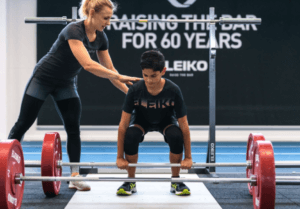
First off, try not to confuse strength training with weight lifting, bodybuilding, or powerlifting, the three of which can be harmful to kids, or potentially even damage some of your equipment, like ending up with bent barbells.
How? You might ask.
Well, it’s because these exercises can put too much strain on major muscle groups, tendons of a youngling, hurting things such as their bone growth more so if they have low bone density. Such damage can be substantial if proper technique is completely sacrificed in favor of lifting more weight. Poor technique can be a straight pass to injury, even for seasoned lifters.
When it comes to kids, controlled movements and light resistance are truly the best. A special emphasis should be put on proper technique and safety. Your child can do a lot of strength training with his or her own body weight exercises (like doing sit ups), lightweight dumbbells (I’d suggest the lowest setting on adjustable dumbbells) or cheap resistance exercise bands. They can also rely on free or machine weights, obviously.
Bodybuilding
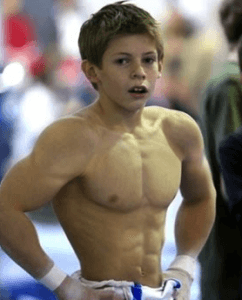
Bodybuilding is both a sport and a recreational activity. Competitive bodybuilders can go as far as developing extremely muscular bodies – from the neck down – to fight (not literally) for recognition at competitions. Their bodies usually contain very low levels of fat, and they boast a highly muscular size and shape.
Bodybuilders rely on a number of different exercises, including weight machines like the sumo smith machine or free weights. They’re often the type of people who use such exercises the most. This is due to the fact that they need every bit of muscle humanely possible in order to enhance body features.
Bodybuilders don’t usually mix up with powerlifters or Olympic lifters. However, they usually are more familiar with the health and nutrition aspects of health training and fitness. That’s why taking at least 2 protein shakes a day and topping that with heavy meals is a mainstay in the bodybuilding community anyway.
In fact, the nutritional side of things plays a huge role in a bodybuilder’s weight training programs mainly because they always seek to lower the percentage of body fat and cholesterol levels. On the other hand, they use exercise to increase metabolism and burn up any surplus fat in the body.
As you’d imagine, bodybuilding is no kid activity. However, with the right youth strength training, young athletes can access a scaled down version of the big boys’ stuff.
Powerlifting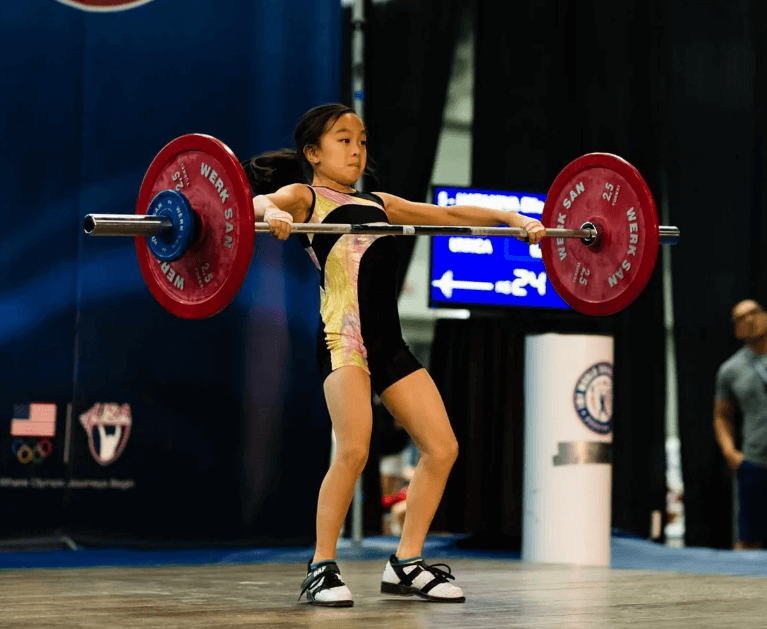
Powerlifters take part in competitions to see who can lift the heaviest weights in three exercises, which are the bench press, deadlift, and squat.
Powerlifters usually don’t cross over into Olympic lifting, a type of weightlifting. The techniques and culture behind these two can be quite different.
Is It Okay for My Kids to Weight Lift?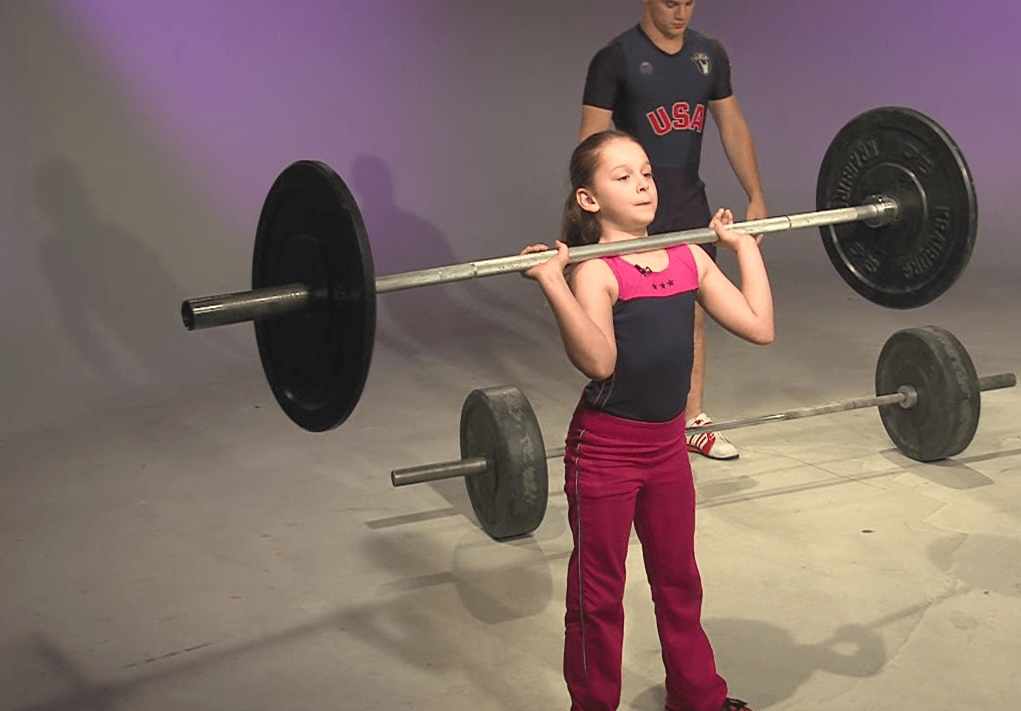
Now, let’s get to the big questions and see whether your child’s age and form are right to to join a child’s strength training program or strength train at home.
At What Age Should They Start?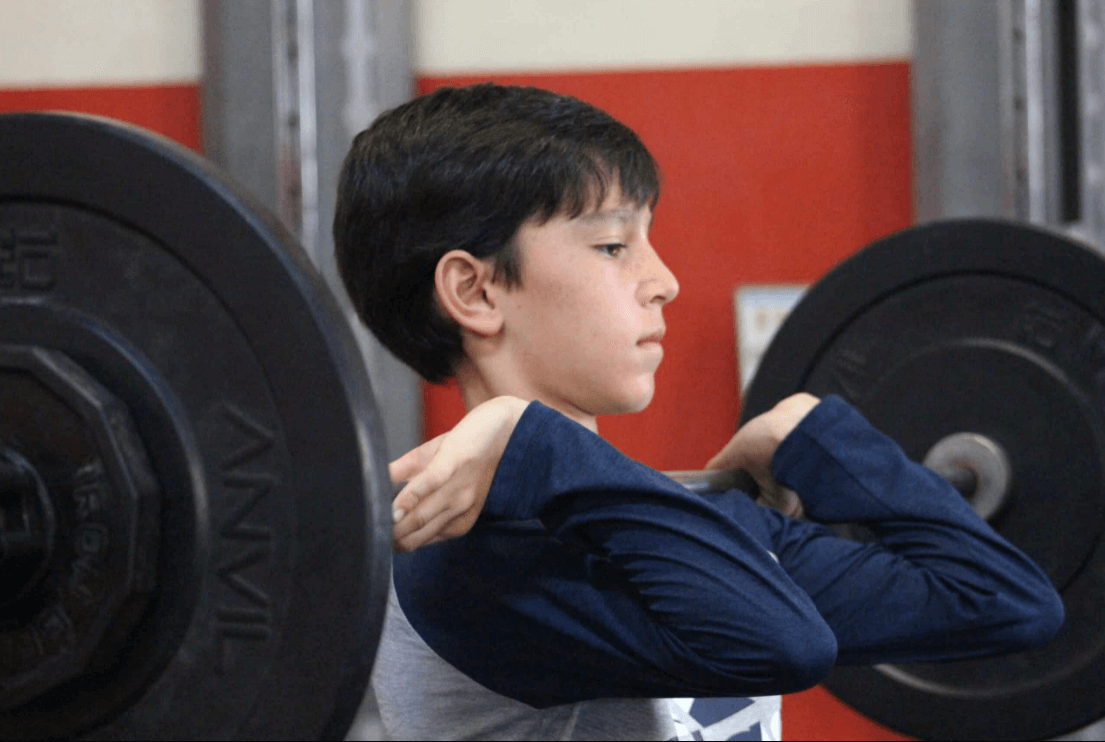
Weightlifting is completely safe for your kids; it won’t stop their growth, and they sure as hell won’t kill themselves while doing it. After all, it’s not like you are going to introduce them to punishing training programs or equipment with too much weight, like the millennium dumbbell anyway. This means that you should get your eight-year-old on that strength program, right?
No.
According to Jordan Feigenbaum, a medical doctor and strength coach from Barbell Medicine, healthy children would probably be fine doing a one or two sets of compound exercises, such as deadlifts or squats, but that’s not the way to go in the long run.
They’re only ready when they’ve reached stage 4 on the Tanner Puberty Scale (2), which means they’re basically in full-blown puberty. Adult-like pubic hair and higher body mass in both males and females, almost fully developed breasts with females and larger testicles and penis for males. Additionally, males in Tanner Stage 4 will begin to develop some facial hair, and their voices will become deeper than usual.
The main reason why your child shouldn’t regularly start weight training before they reach Tanner Stage 4 is the simple fact that they don’t have the right hormone levels, specifically testosterone, to handle the progressive overload, exercise correctly, and recover from each training session.
Children usually enter Tanner Stage 4 between ages 11 and 17, and it greatly differs from one to another.
You might have a 12-year-old, a 6th grader who’s already in Stage 4 and is physically ready to start youth resistance training.
You might also have a child who’s a late bloomer and won’t be physically ready until they’re a junior in high school.
My only advice is that you don’t rush it. Simply let your child’s physical maturity determine when it’s time for them to start a progressive training program.
Is There a Difference Between Boys and Girls?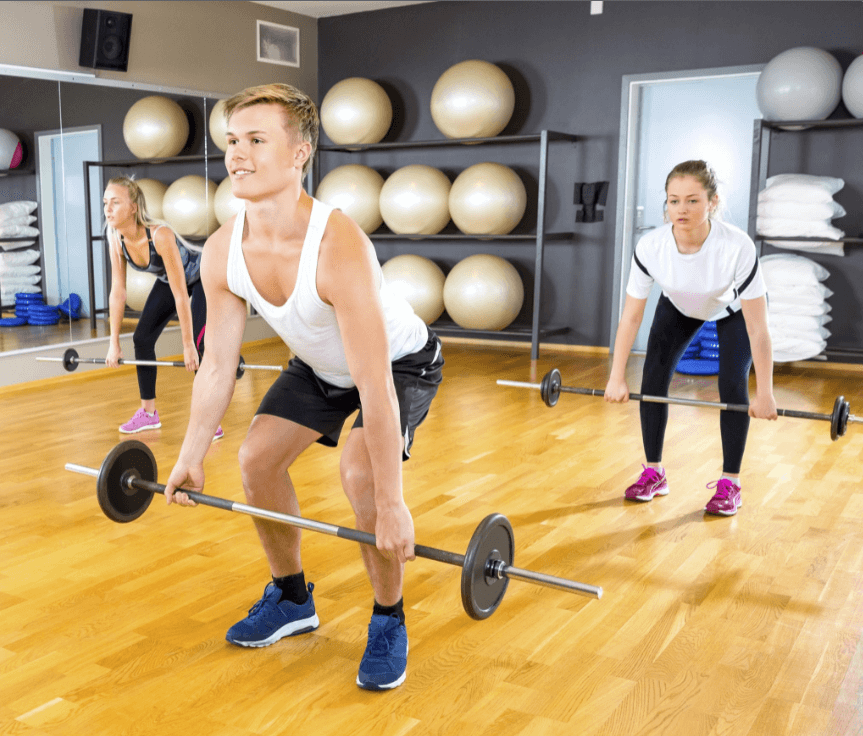
Youth strength training can be quite tricky, given the number of stigmas that surround it. One prime example is parents fearing that the use of weights and weight machines will make their daughter look ‘bulky’ from lean body mass. Or the idea that this sort of physical activity is as beneficial for girls as it is for boys. Both are misconceptions.
A well-thought-out child’s strength training program led by a qualified trainer creates healthier girls, both physically and mentally. In addition to gaining all the physical benefits of strength training, these girls will witness the progress they make firsthand, which acts as an excellent athletic performance, confidence and self esteem boost.
However, there are a few differences between boys and girls when it comes to strength and weight training. Both get similar benefits, but according to experts, a girl should stick to lifting light weights, preferably less than her body weight if she hasn’t reached puberty yet.
This can also be a concern with boys, and as I’ve mentioned before, they should only increase the amount being lifted once the form is mastered and they’ve managed to build strength – for injury prevention reasons.
Even for adults, you need to grasp the right form, build on muscle strength, and measure your fitness level before taking on more challenging workouts.
Will Weight Lifting Stunt My Kids’ Growth?
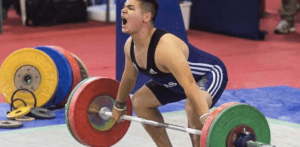
One of the most common myths about weight lifting is that it stunts one’s growth, more so in younger children. Numerous studies were conducted on this matter, and none of them found that lifting weights can stunt or inhibit growth. A child’s growth plates will keep developing to physical and skeletal maturity regardless of exposure to strength and conditioning training.
However, as is the case with almost any training programs out there, if you do too much of it, physical problems can appear, regardless of one’s age or overall fitness levels. That’s right, being all buffed up isn’t an excuse to overtrain.
Once again, the key aspects when it comes to training as a child are close supervision, correct exercise form and technique, and lightweights, again, dumbbell-only workout could make for a great start, and still deliver great results. There is also the element of slow progression when it comes to adding more weight or doing more reps/sets.
Thing is, sticking to 7 or 8 reps per week, with proper supervision from a certified personal trainer is way safer and far better than hitting for 15 repetitions on one training session without directions from a personal trainer or qualified instruction provider – that will sure be a recipe for disaster.
What Are the Benefits of Strength Training for My Kids?
Research has proven that kids who train properly will have some of their fitness measures improved over time.
Still, why bother training your kids this way when they could just stick with having fun and playing sports?
Well, it is true that that lifting will take more time and effort, but the benefits of it for your children are definitely worth it. They include, but are not limited to:
- Complex exercises that put more emphasis on numerous joints, coordination on major muscle groups, flexibility, etc.
- Strength training help improve sports performance for such sports as basketball, soccer, and volleyball. Besides, it helps reduce sports related injuries.
- If done properly, these exercises can be a super fun form of at home physical activity depending on your child’s age.
- They can set your kids up for a lifetime journey of training and caring about their eating habits (such as the need to stop eating sugar), health and overall fitness.
Talk with a Professional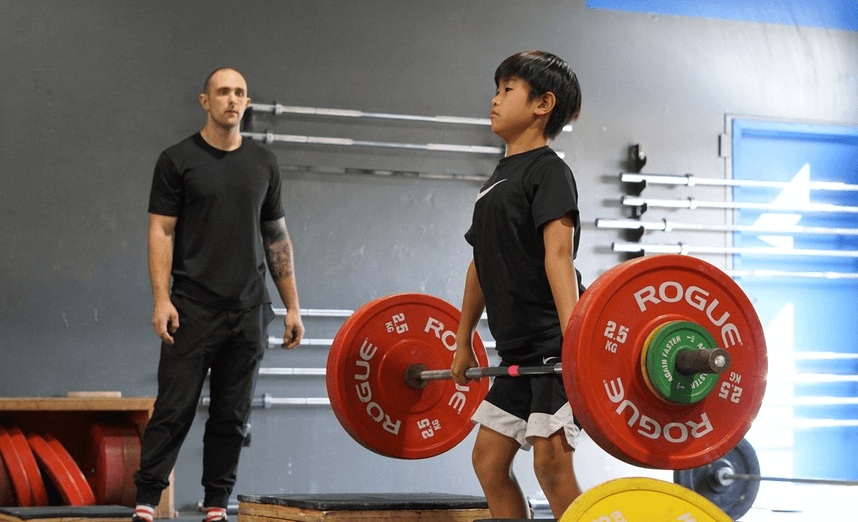
Consult with your child doctor before starting anything. Always make sure that your child is properly supervised by a qualified personal trainer and is using safety equipment, and is abiding by the rules and regulations that are appropriate for his or her age.
Youth Weight Lifting – Getting Started
Good form and lifting techniques are essential to this process, and without them, your child won’t really be able to do much. Once that’s dealt with, you’ll need to worry about weight selection, repetitions, sets, etc.
Let’s Take an Example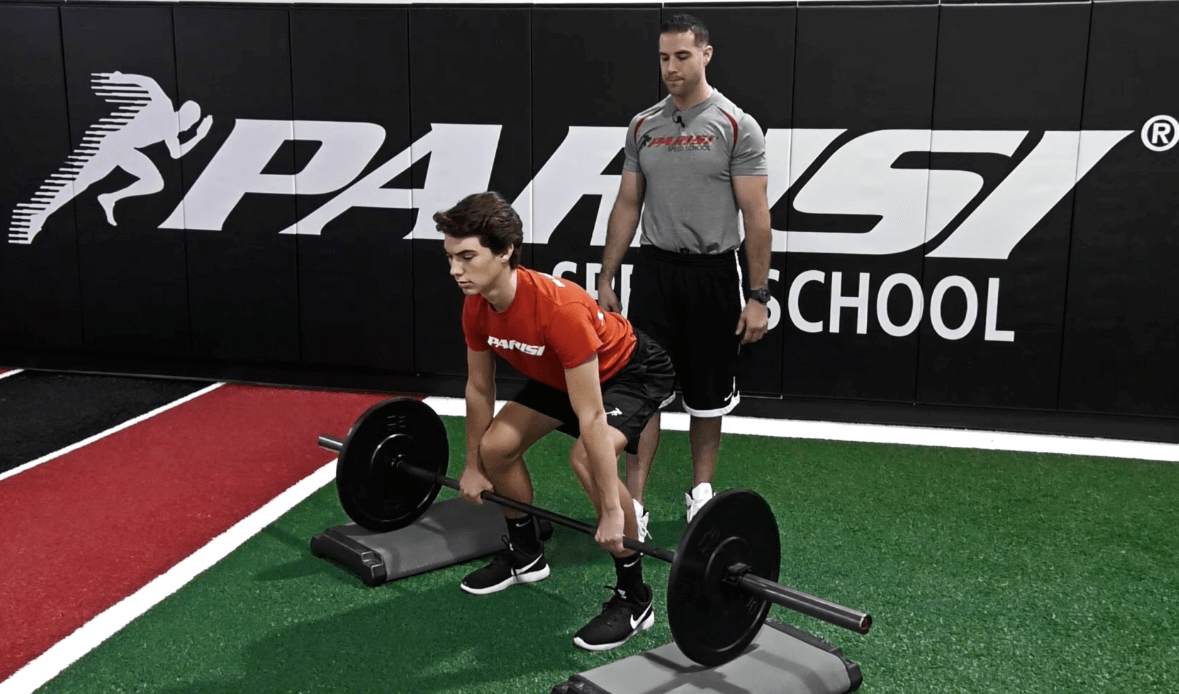
Here’s an example, a walkthrough of an exercise using a dumbbell curl:
- Fuel up: make sure that your children take in sufficient foods and fluids prior to the exercise, with a focus on carbohydrates.
- Warm-up: This is essential to the whole exercise, and it can be in the form of a jog, run, mild stretches – actually, stretching is thought to make people taller among other benefits, etc.
- Demonstrate to them the correct form and technique of whatever exercise they’re going to perform.
- Pick the weights accordingly. Choose one that allows your child to perform at least 12 repetitions (preferably 15 repetitions). By doing this, you’ll ensure that the weights are light enough not to place any unnecessary stress on the joints or developing cartilage and bone of your child.
- Establish a fixed number of sets and exercises. My personal go-to with my son is two sets for each exercise and somewhere from around six exercises. Of course, this should depend on the age, fitness, and maturity of your child. You could consider increasing the weights gradually as your children get older or stronger.
- Act as a supervisor. In other words, you should already understand a few basics about weight training for children and adults too upon which you’ll base your supervision.
- Cooldown: some stretching and calisthenics and mild weight training.
- Create a weekly plan: for most children, two sessions per week is enough. The sessions should be set in a way where there is at least a day of rest in between each two to ensure recovery. So you can keep it at say three sessions per week max.
- Make the workout entertaining: this can be done by including music, videos, etc. You don’t want your child to be completely bored while working out, as this might lead to some reckless behavior.
Training Program for Kids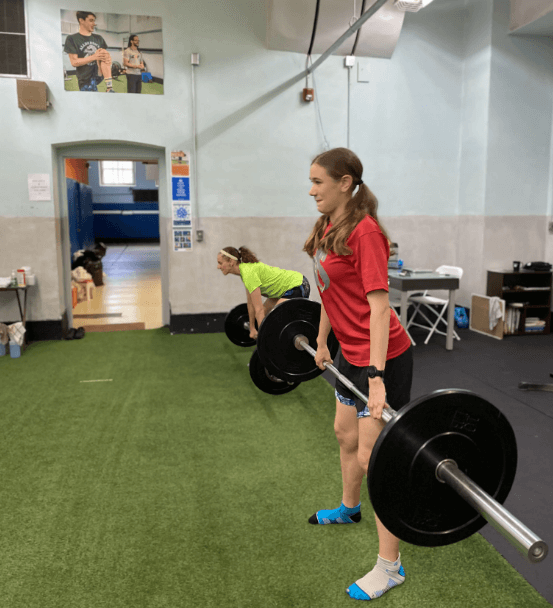
Creating schedule for training programs doesn’t have to be hard, but it sure does help make strength training safe for everyone.
Below is a regular gym weight training workout that is compatible with adolescents in the 12 to 15-year-old age group.
Warm-up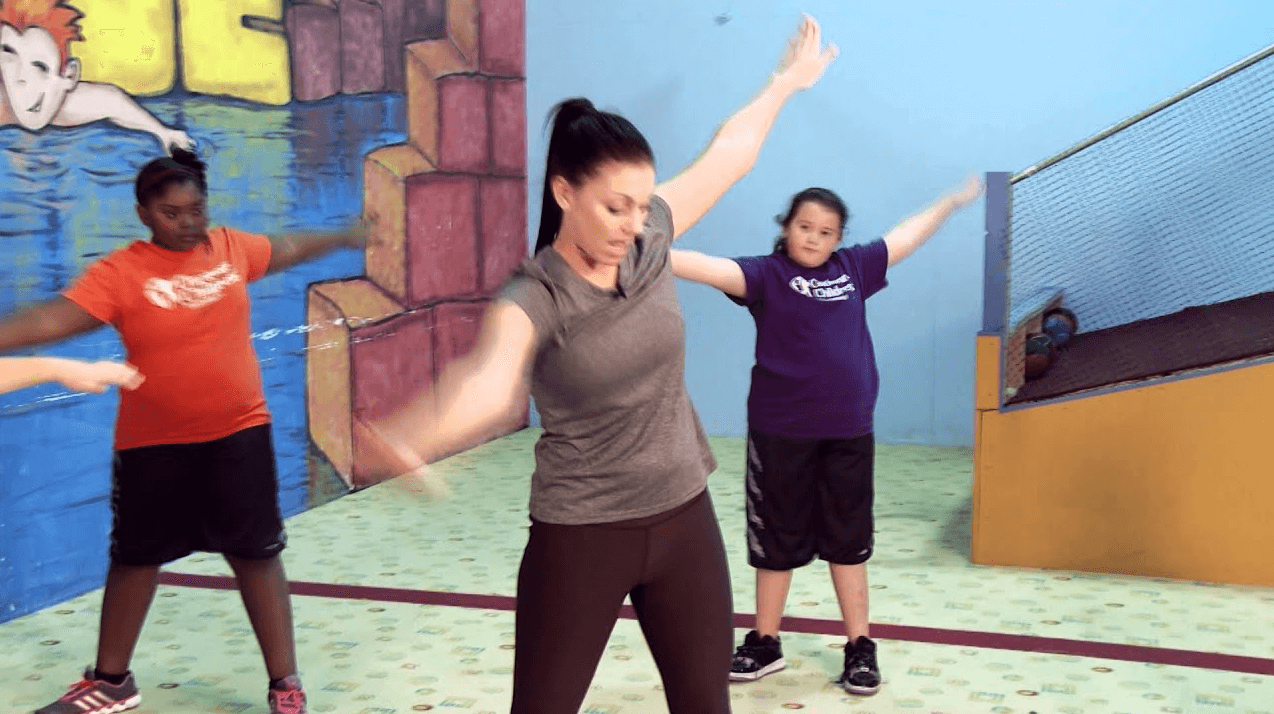
A warm-up is the most important part, and should take 10 to 15 minutes, enough time to get the blood circulating into the muscles. This will get them ready for the strain that they’ll be under during the workout. Besides, this also helps improve physical activity and athletic performance in young athletes.
The best way to start a warm-up is by performing some aerobic activity for 10 to 15 minutes, followed by some form lifts of the barbell with light weights or no weight load at all- you can get them a cheap barbell that’s small and light enough for their strength.
It’ll help the body of your child to familiarize with the proper form of the full range of each exercise – it will also be easier for them to follow directions if the load is bearable. You just need to get them a qualified trainer, and they should be ready to follow directions and instructions to the T.
Exercises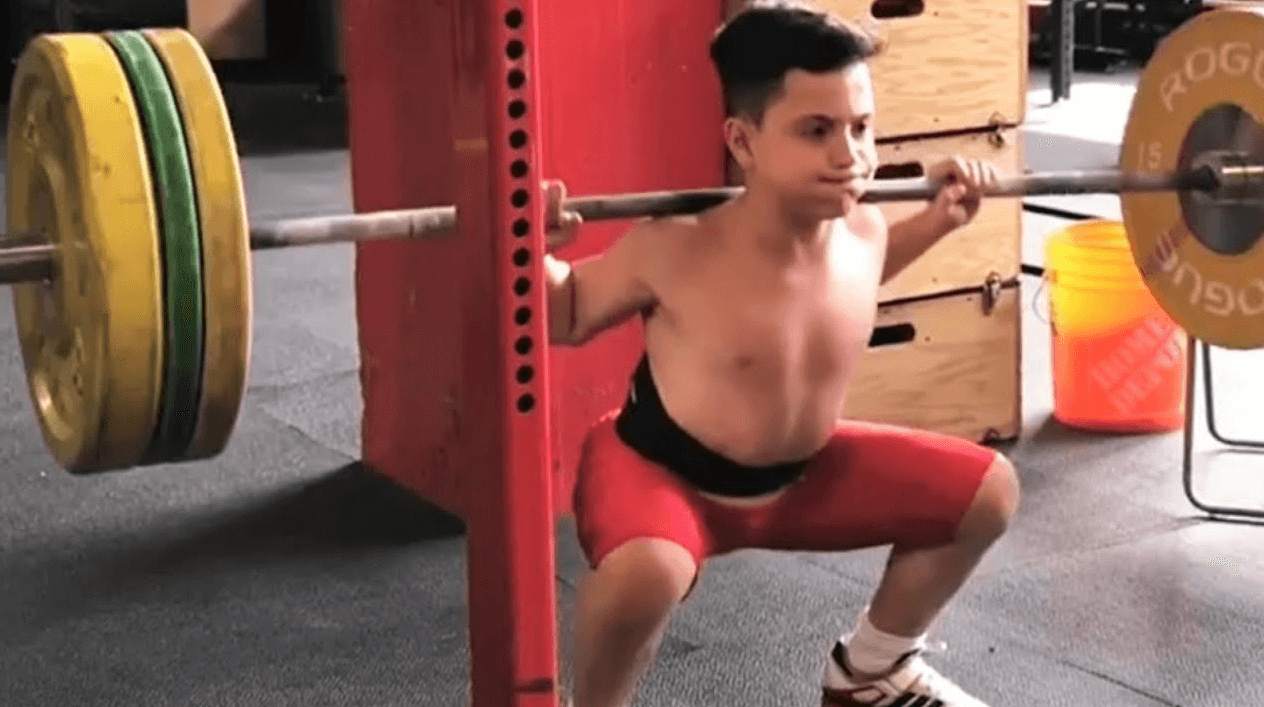
These exercises are cut out to help your kid build strength in both the upper and lower body.
All exercises should be performed in 2 sets, 10 repetitions:
- Barbell squats
- Barbell deadlift
- Seated cable row
- Cable pulldown
- Cable triceps pushdown
- Standard crunch
- Incline dumbbell press
- Dumbbell arm curl
- Bent-over row using barbell or dumbbell
Cooldown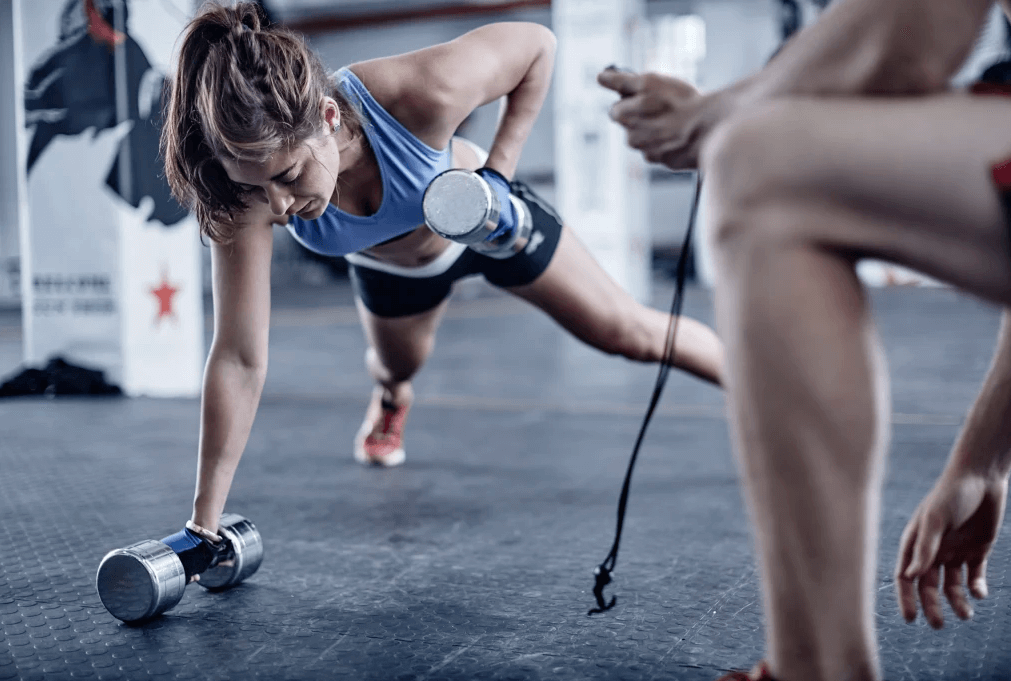
5 to 10 minutes cool down with light stretching.
Schedule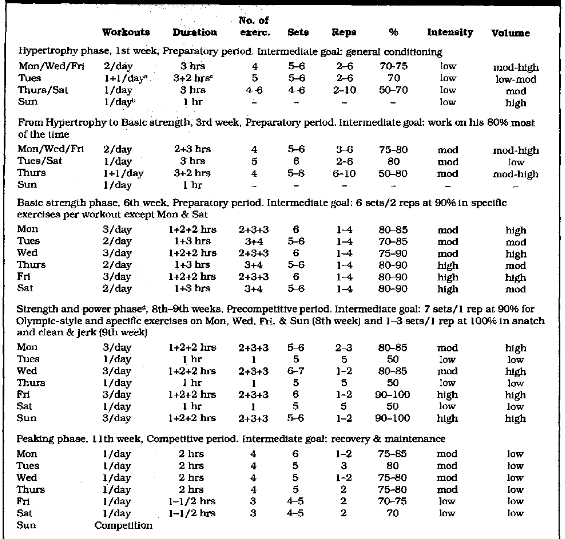
Two to three times per week, with each workout lasting around 30 minutes
Progression
It is recommended for adults to increase their weight by no more than 10% each week, but to keep their strength training safe, children should increase it even slower. A good alternative to adding weight is to have your child increase the number of sets or exercises per set.
Reps & Sets: How Much Can Kids Handle?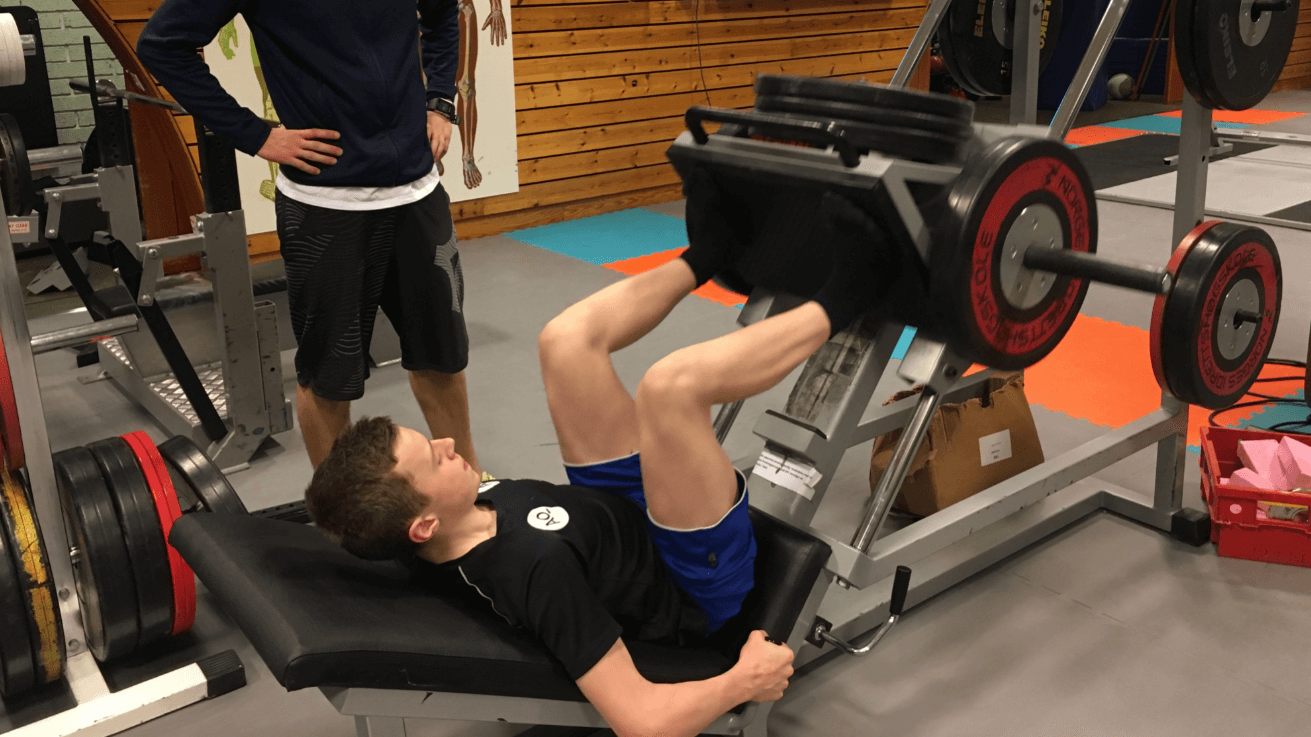
Kids obviously can’t and shouldn’t do the same workouts that full-grown adults do especially when it comes to strength and conditioning.
Their training programs should be well designed to focus on higher repetitions (if done right, anywhere from 7 or 8 reps should be good) and fewer to create muscle memory. This will ensure that your kids develop a proper form. Only when they get a proper form can your children add weight and do more than one or two sets.
A simple way to determine the appropriate average dumbbell weight or overall weight for your children is by testing increasing weights with ten reps. If they fail to keep up a proper form (say like they can’t solidly maintain balance) or can’t complete the reps, then you should lower the weight a bit.
In one study, researchers picked a number of boys between the ages of 10 and 12 and introduced them to Olympic-style lifting, as well as basic plyometric exercises. Another group of boys implemented more traditional exercises such as bench pressing and squats. Both groups were given fitness tests before and after the experimental exercises.
They were given small increases in weight for ten reps. Once they managed to master the 10 reps, they moved on to two sets of ten reps. After that, they were given a mixed set and rep scheme, which totaled to three sets. All these increases were slowly progressive and carefully planned and supervised.
The researchers found that the boys who did the lifting and plyometric exercises had significantly improved results in fitness tests such as horizontal jump, balance, 20-meter, etc. Their results were comparably superior to those of the boys who only did resistance training.
List of Exercises for Kids
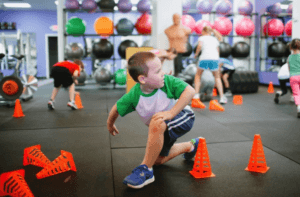
Now that your kids are ready to start strength training-also called resistance training, it’s time to look at several other exercises that they can add to their weight lifting workouts.
Beginner Push-Ups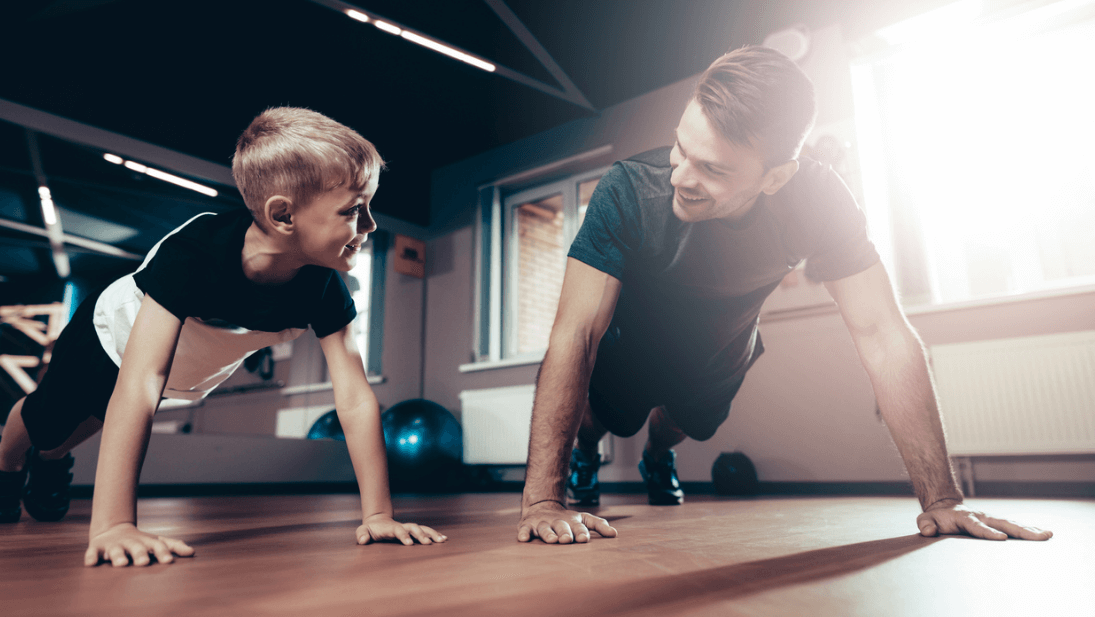
Tell your children to:
- Begin facedown, with their hands and knees on the floor
- Place their hands directly under their shoulder
- Extend their arms and pull their belly button up and raise their body
- Slowly lower their body until their chest almost touches the ground
- Repeat the process for as many times as they can
Wall Push-Ups
Wall push-ups are an effective way to teach your kids how to master push-ups in general – which make for one of the greatest body weight exercises out there. In order to properly perform wall push-ups, your kids need to:
- Stand about a few feet away from a wall with their legs together
- Place their hands on the wall
- Lean forward to the point where their nose touches the wall then push back to starting position
- Repeat this at least 20 times
Plank Position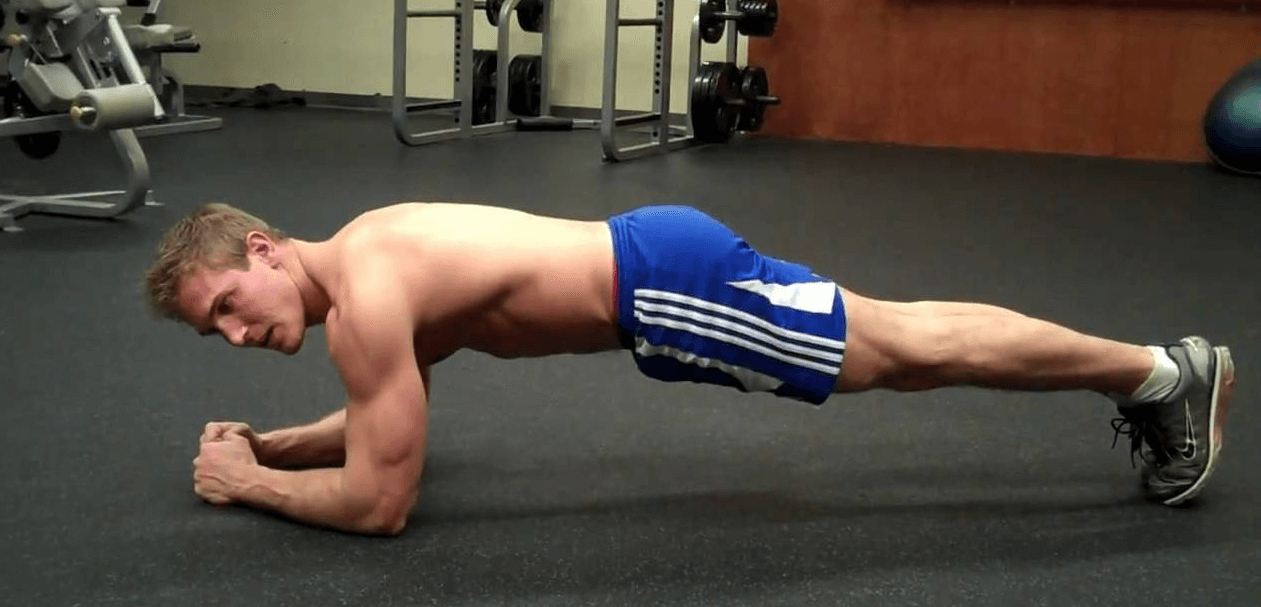
The plank is another one of those outstanding body weight exercises that can be done just about anywhere.
Tell your kids to:
- Get on their hands and knees while keeping their arms extended and straight below their shoulders with their fingers pointing forward
- Straighten their legs behind them and use their back and stomach muscles to lift their stomach off the floor until their body forms a straight line
- Hold the plank position for at least 15 seconds – do note, young folks, especially beginners take planks and push-ups to be one and the same, at least most tend to muddle up one with the other, so make sure they are in the plank position.
Biceps Curls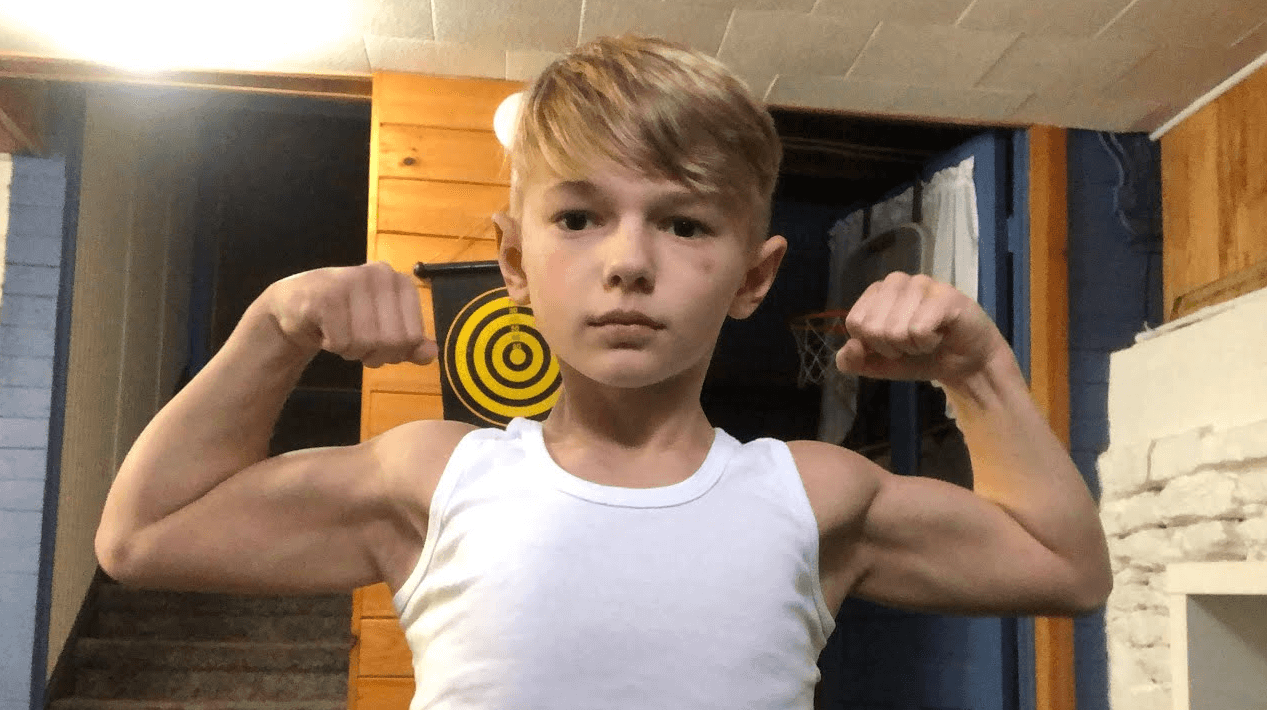
What you need: small sponge-like ball or balloon for each kid
Tell the kids to:
- Stay in a standing position, with their right arm bent at a 90-degree angle then place a ball or balloon between their biceps and forearm
- Close the forearm to hold the ball in place
- Tightly squeeze the arm 10 times, rest, then switch to their left arm.
Triceps Push-ups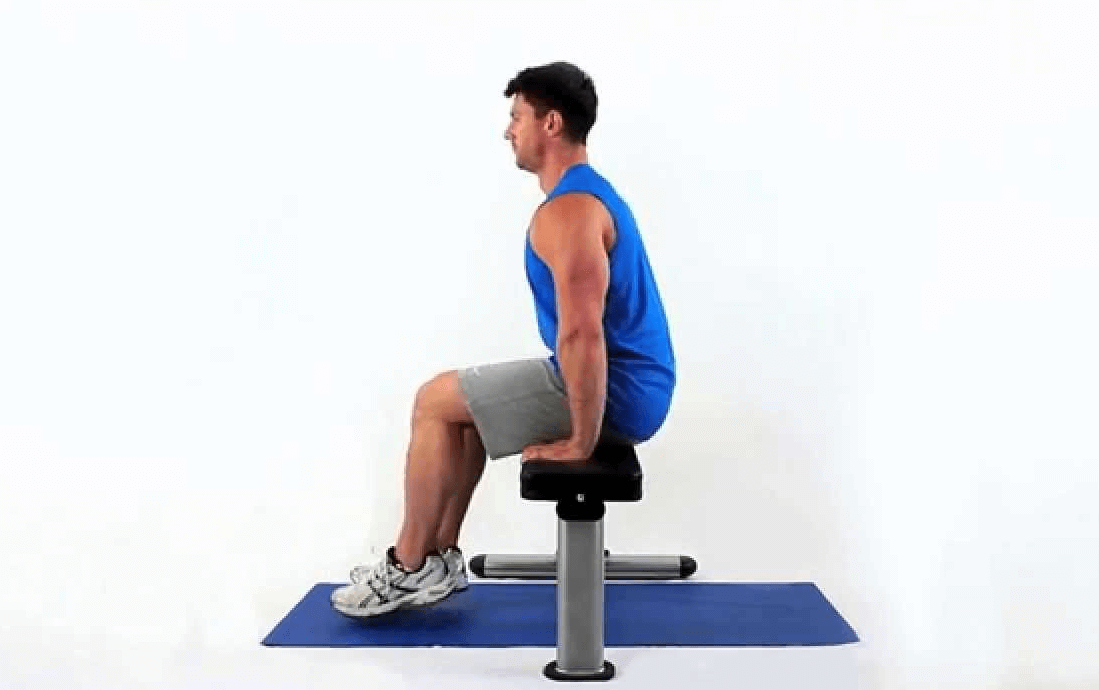
What you need: a chair for each kid
Tell the children to:
- Sit on the edge of the chair with their legs hip-distance apart
- Place their palms down on the edge of the chair at their sides, and have their fingertips curl underneath so that they point toward their bottom. You can also do this workout yourself if your triceps are not growing.
- Push down with their arms and lift their bottom an inch of the chair, trying to hold this position for 5 seconds
- Sit back down again and repeat this for 5-10 times.
Throwing a Ghost Ball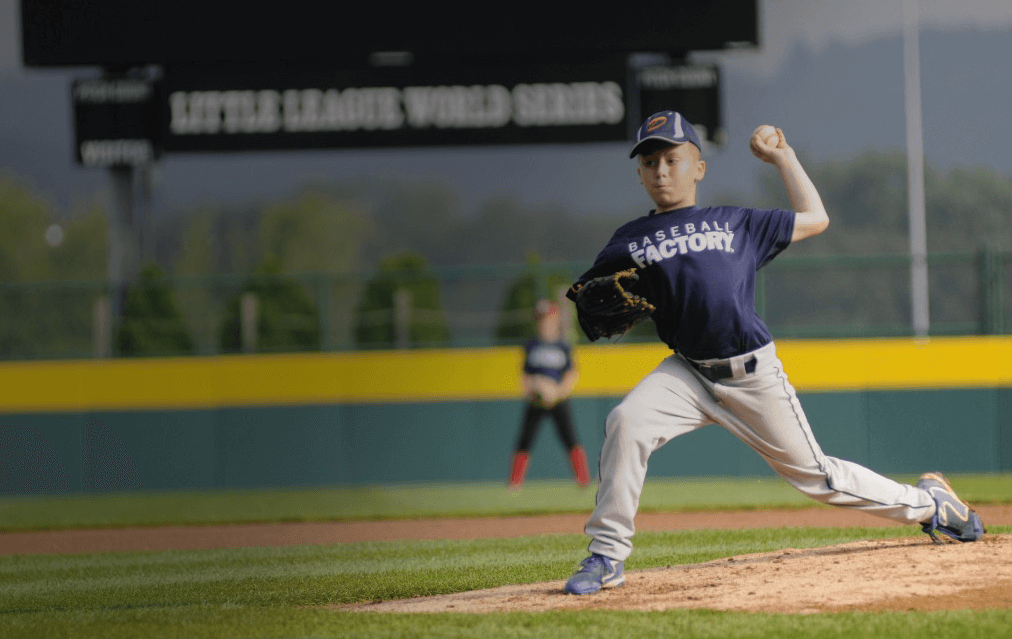
Tell your kids to:
- Pretend that they’re throwing a baseball by going through the entire moving process several times
- Switch from one arm to another
- Repeat the movement several times with each arm
Punching Arms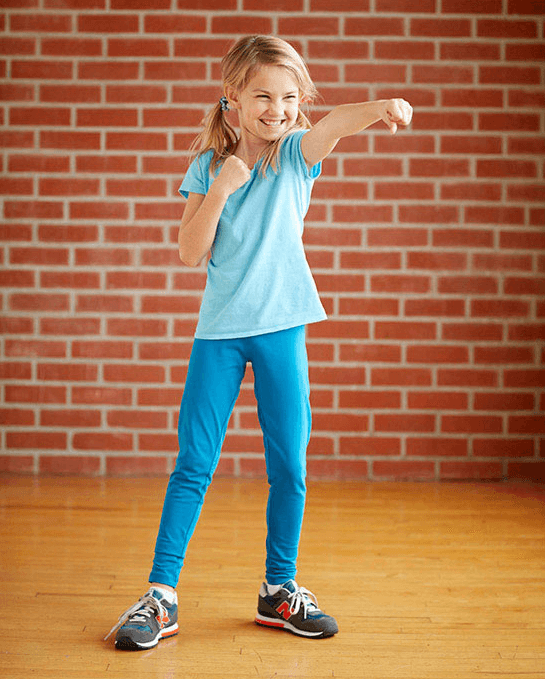
Tell your children to:
- Imagine a standing punching bag or a heavy bag in front of them
- Punch fast and slow from different angles, using both arms
- Repeat this exercise several times
Boxing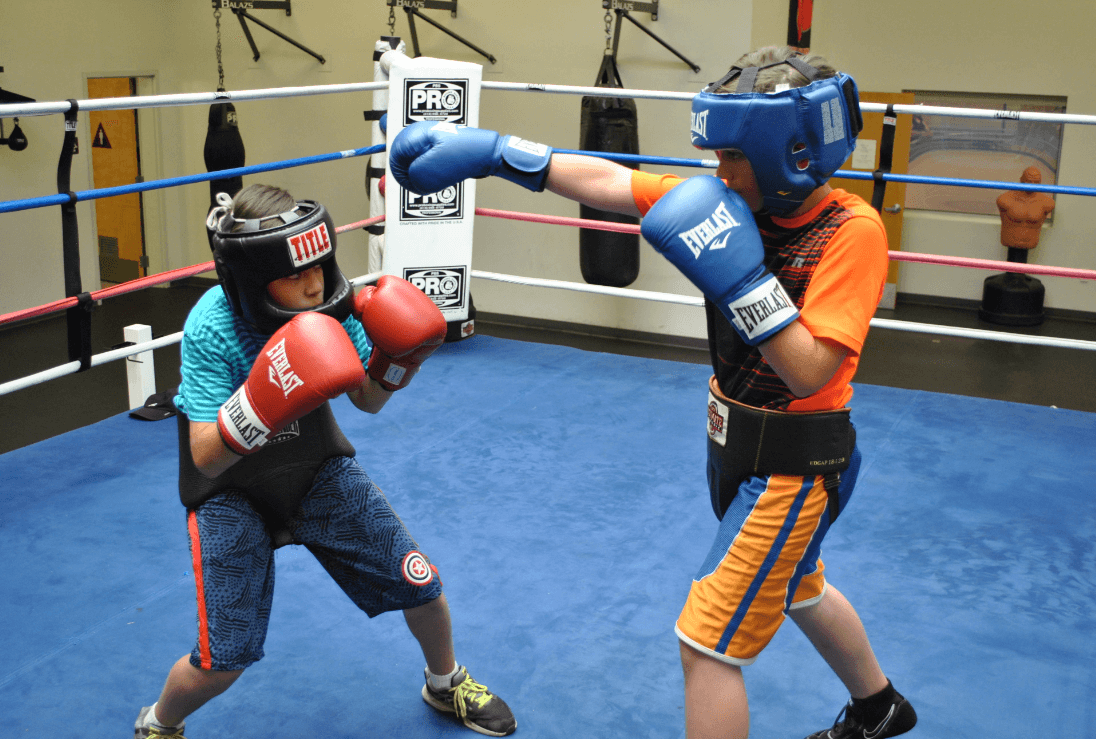
Tell the children to:
- Stand with their feet apart
- Bend their arms at elbow-level, brining them toward their own body and keeping their fists at the level of their chin
- Slowly bend their upper body down to the right as if they’re avoiding a punch.
- Return to center and switch to the left side and repeat 20 times
**SideNote: If your kid is interested in boxing, you can also get them a pair of amateur boxing gloves and boxing shoes to make the practice feel as real as it can get, these will also come in handy for their boxing training.
Overhead Reach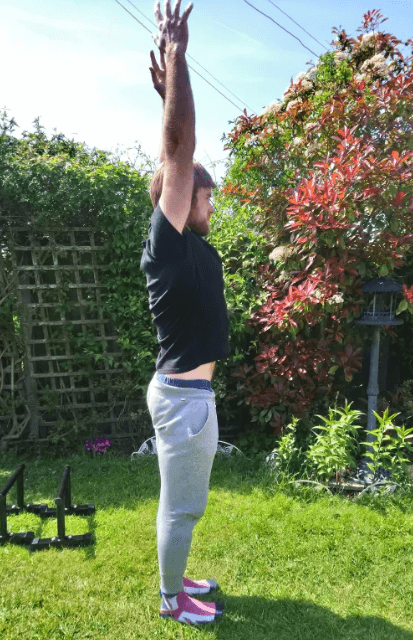
Tell your children to:
- Bring both their arms over their head in a standing position
- Pretend that they’re climbing up a rope by leaning slightly to the right while trying to stretch their body to the maximum
- Lower their left hand until it’s at shoulder level
- Return to the initial position, lean to the opposite side, and repeat.
The Takeaway…
There you have it folks! I have taken you through pretty much every aspect that your kid needs to be on their front foot as they start strength training for children, build muscle strength and improve sports performance.
But these aren’t the only benefits there are to youth weight training programs. Beyond the brute muscle strength, lean body mass and sports health that come with dedication to weight machines, weight plates and youth strength training sessions are other perks.
With your kid staying fit, you’ll never have to worry about uncontrolled high blood pressure levels, lower back issues, obesity and other health concerns that are affecting kids these days.
Sounds like a win-win to me.
Related Readings:
- One Punch Man Workout Routine
- Best Incline Treadmills
- Stationary Bike Vs Elliptical
- How Long Should You Run on the Treadmill?
- How Did I Gain 2 Pounds Overnight?
- The Dumbbell Stopgap Program
Sources:
- https://www.healthline.com/health/parenting/stages-of-puberty
- https://www.mayoclinic.org/healthy-lifestyle/tween-and-teen-health/in-depth/strength-training/art-20047758
- https://www.issaonline.com/blog/index.cfm/kids-and-strength-training-when-can-they-start
